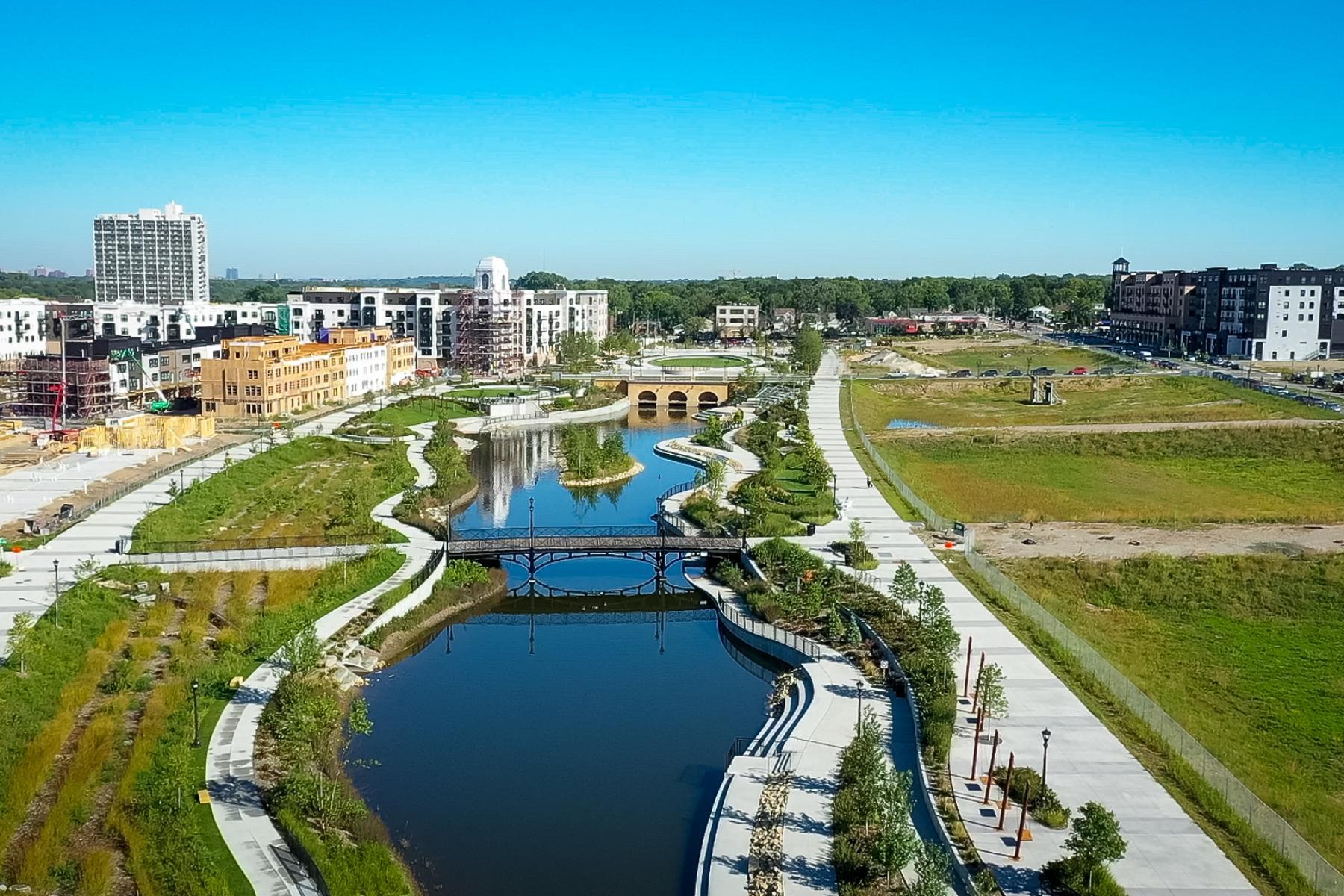A New Model for Stormwater Management: Highland Bridge’s Central Water Feature

The central water feature at the new Highland Bridge mixed-use development in Saint Paul, Minn. is more than just an eye-catching body of water. It was designed to collect stormwater and clean it before it travels to a waterfall and then into a stream that is connected to the Mississippi River.
According to a recent Finance & Commerce article, stormwater management has become even more critical in a time of global climate change. Torrential downpours have extended wastewater systems to their capacity. In metropolitan areas, surfaces like roads, sidewalks and buildings don’t absorb water and it must go somewhere. When stormwater overflows wastewater systems and causes emergency discharges, cities experience increased erosion, destruction of aquatic life, pollution of rivers and streams, devastation of recreation and tourism and endangerment of drinking water.
Nathan Campeau, vice president and senior water resources engineer at Barr Engineering Co., helped design the infrastructure and told Finance & Commerce he believes that district stormwater management solutions offers a less expensive and more effective approach than one-off systems that individual buildings often use.
The central water feature at Highland Bridge stretches for several city blocks and is surrounded by walkways, native gardens and seating areas. Stormwater that will be collected from surrounding buildings will go into an additional open pond, five rain gardens and five underground filtration systems. Then the water will move to the water feature before traveling through a rugged “nature zone” that channels the stormwater into a stream that runs over Hidden Falls, a waterfall located at a nearby park.
As the master developer of the former Ford Plant site, we view water as an asset and not just a waste product to get rid of. Mark Doneux, administrator with the Capital Region Watershed District, told Finance & Commerce that a shared stormwater management system in a planned development like Highland Bridge makes more sense than every building owner constructing their own systems.
Another benefit of shared systems is allowing designers to add value and beauty through parks and bodies of water that residents and visitors can enjoy. And because of this, Highland Bridge offers a prime example of how water management can be an asset in larger developments.
As Doneux puts it, “The magnitude of this development can bring not just state attention but national attention in a different way to do this. We can showcase this as a new model for stormwater management.”